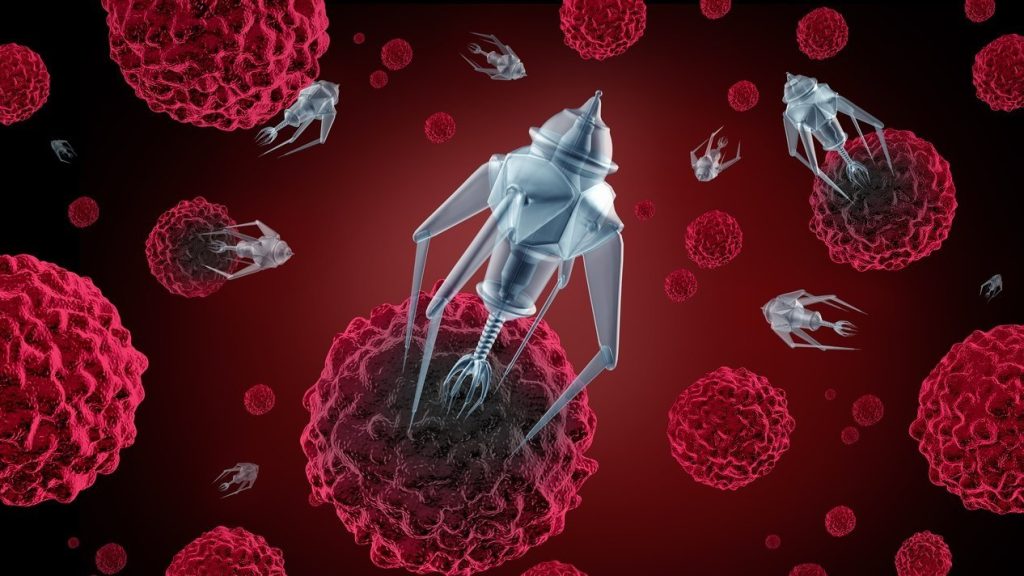In a remarkable advancement poised to transform cancer treatment, researchers have developed a novel “kill-switch” nanorobot that specifically targets and eliminates cancer cells. This cutting-edge technology represents a significant leap forward in the pursuit of precise and effective cancer therapies. In this article, we will explore how this innovative nanorobot operates and its potential implications for the future of oncology.
The Rise of Nanotechnology in Medicine
Nanotechnology has long promised to revolutionize the medical field, offering solutions that operate on a scale nearly imperceptible to the human eye. This innovative approach has enabled remarkable advancements in various medical applications, such as targeted drug delivery directly to tumors and imaging at the cellular level. By manipulating materials at the nanoscale, researchers are beginning to change how we approach some of the most challenging medical conditions, including cancer.
Introducing the Kill-Switch Nanorobot
The latest breakthrough in nanotechnology is a nanorobot designed with a sophisticated “kill-switch” mechanism that activates based on the pH levels of its environment. Researchers engineered this nanorobot to recognize and respond to the acidic microenvironment typically found in cancerous tissues. This intelligent design allows for selective targeting of cancer cells, enhancing the precision of cancer treatments.
Mechanism of Action
The functionality of the kill-switch nanorobot can be broken down into three primary components:
- Acidic Detection: Cancer cells often thrive in a more acidic environment compared to healthy cells. The nanorobot is equipped with specialized sensors that detect this difference in pH levels. By sensing the acidic conditions present in tumor microenvironments, the nanorobot can differentiate between cancerous and healthy cells.
- Targeted Activation: Once the nanorobot identifies the acidic pH associated with cancer cells, it activates its kill-switch mechanism. This process triggers a precise response that leads to the targeted destruction of cancer cells. The ability to activate in response to the specific conditions of cancerous tissues minimizes unintended effects on surrounding healthy cells.
- Selective Killing: The true innovation of this technology lies in its selectivity. By exclusively activating in the acidic environment of cancer cells, the nanorobot significantly reduces damage to healthy tissues. This targeted approach aims to overcome the limitations of traditional cancer treatments, which often harm healthy cells and lead to numerous side effects.
Implications for Cancer Treatment
The development of the kill-switch nanorobot holds several promising implications for cancer therapy:
1. Increased Precision
The ability to specifically target cancer cells while sparing healthy cells can greatly enhance treatment effectiveness. This targeted approach not only focuses on eliminating the cancerous cells but also reduces collateral damage to healthy tissue, which is often a challenge with conventional therapies.
2. Reduced Toxicity
Traditional cancer treatments, such as chemotherapy and radiation, frequently come with severe side effects. These adverse effects stem from the indiscriminate damage to healthy cells alongside cancer cells. The kill-switch nanorobot aims to localize treatment, minimizing toxicity and improving the overall patient experience during therapy.
3. Enhanced Efficacy
By improving the precision of cancer treatments, this innovative technology has the potential to increase overall success rates. Enhanced efficacy could offer new hope for patients battling cancers that have previously been deemed difficult to treat. The possibility of achieving better outcomes with fewer side effects represents a significant advancement in cancer care.
Current Progress and Future Prospects
Initial studies, including tests conducted on mice, have shown promising results for the kill-switch nanorobots. In these studies, the nanorobots effectively targeted and destroyed cancer cells without causing harm to adjacent healthy tissues. While these early successes are encouraging, further research and clinical trials are essential to ascertain the efficacy and safety of this technology in human patients.
As researchers continue to refine and develop this innovative approach, we may be on the brink of a new era in cancer treatment. The kill-switch nanorobot not only signifies a major advancement in medical technology but also serves as a beacon of hope for those affected by cancer.
Looking Ahead: The Road to Clinical Application
The journey from groundbreaking research to clinical application is fraught with challenges, but the novel kill-switch nanorobot offers a glimpse into a future where cancer treatment could be more effective and less invasive. As the scientific community remains dedicated to innovation, the dream of targeted and precision cancer therapy is becoming increasingly attainable.
Continued research will focus on:
- Expanding Testing: Conducting further studies to confirm the safety and efficacy of the nanorobot in larger animal models and eventually in human clinical trials.
- Optimizing Delivery: Improving methods for delivering the nanorobots to tumors, ensuring they can reach and penetrate cancerous tissues effectively.
- Monitoring Progress: Developing techniques to monitor the activity of the nanorobots in real time, allowing for precise adjustments to treatment protocols as necessary.
As we anticipate more updates on this exciting development and others in the field of medical technology, the prospects for improved cancer therapies continue to grow. With ongoing advancements in nanotechnology, the potential for more effective and targeted treatments becomes an increasingly realistic goal.
Conclusion
The emergence of the kill-switch nanorobot represents a significant milestone in the fight against cancer. By combining the principles of nanotechnology with innovative mechanisms for targeting cancer cells, this technology has the potential to transform how we approach cancer treatment. As research progresses, we can hope for a future where cancer therapies are not only more effective but also less harmful to patients. The scientific community’s dedication to innovation and progress in this field is paving the way for a new era in oncology, bringing hope to countless individuals and families affected by cancer.
